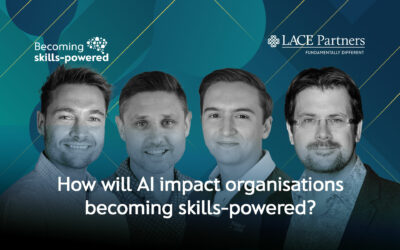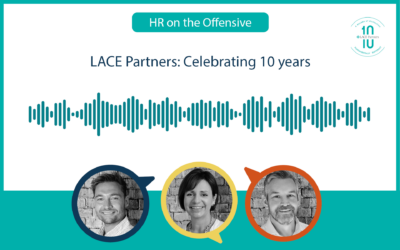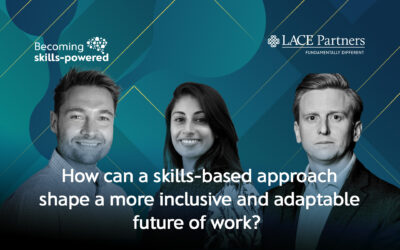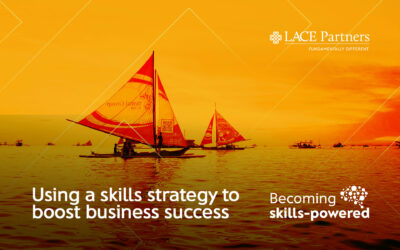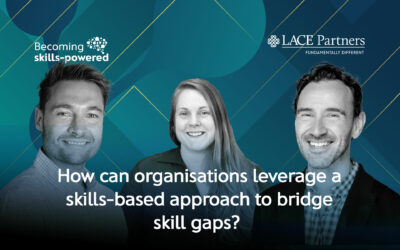We’re delighted to be co-hosting an online event with our friends at Laughology on Thursday 8th October between 1 – 3.30pm. Ahead of the event we took some time to talk to our Managing Director and Co-Founder, Aaron Alburey, about the breakout session he is running: How does HR bring the employee experience to life?
You can register for the event here.
You can’t make everyone happy all of the time
I appreciate the juxtaposition of starting off a blog about an event entitled ‘Virtually Happy’ by saying that you can’t make people happy all of the time but hear me out.
When it comes to employee experience, I think that all HR teams – and businesses too – need to appreciate that your people won’t be happy all of the time. And you shouldn’t expect them to be. Employee experience is not about happiness at all costs. Employee experience is about understanding how your employees interact with your business, including line mangers and third parties and making their experience as positive as possible.
Why is this important? By now most of us have seen the data; happy employees are productive employees, productive employees raise the customer experience, that in turn adds direct value to the bottom line. Data from the Great Place to Work Institute has shown, consistently, that organisations which are seen as “great” places to work consistently outperform organisations rated as “good” by more than four to six times.
So when you are developing employee experience you need to not only think about the ‘what are you trying to achieve?’ and the ‘how are you going to make it happen?’, but also be mindful of the behavioural journey that somebody is going through when they interact with your business. You need to appreciate that there are points in any process where somebody is not going to be happy. Let’s take recruitment and onboarding as an example. In some countries there are laborious legal requirements, documentation, and government background checks, etc, that a new employee needs to fill in. There is no getting around it and, in some instances, there is little you can do to change the process, or to stop potential frustration from that employee.
Part of experiential design is understanding at what point there might be frustration and then trying to reduce it as best as possible, which can be done through automation, data transparency or proactive communication; preparing for that frustration so that it isn’t a surprise for the employee.
What drives a strong employee experience?
For people to be engaged in a process or experience they must perceive that experience as useful to them. It also has to be easy for them to complete the process; a good experience and an easy experience go hand-in-hand.
Lastly, you need people to be motivated to complete a process; they must have the intention and desire. That often comes down to timing. Let’s take the example of a popular app that many people have on their mobile: Uber.
Uber gets me to my destination. It gets me home. That gives me my perceived usefulness.
The system knows where I live. It has my card details. I simply need to check in and confirm where I want to be picked up. Then the car arrives. That is archetypal ease of use.
In terms of intention, I am the one who wants to get home, I am going to get in the car when it arrives. That is my desire. There is no point in an Uber driver arriving when I’m walking to my local shops and asking me if I want a lift, because I don’t have the intention, desire or need at that specific moment.
I appreciate that getting an Uber and describing this process is very different to HR processes, because for a lot of the time the intent is not there from the individual (“Why do I have to do a performance review?”), unless it is driven by their own desire i.e. their own intention is there (“I want to book a holiday”, or “I want to view my payslip”). Whilst you can make HR processes efficient, easy and slick and that will be appreciated by the employee, you need to recognise and not negate some of those processes that perhaps have less intent and desire.
Feedback is essential in employee experience
Getting insight from your people – customer surveys, employee net promoter scores, behavioural surveys that people fill in as they complete tasks – and bringing real-time feedback into your processes is of paramount importance.
Employee experience is about listening. You need to have that mechanism to listen. You can’t make people happy all of the time, but if you have the right structures in place in which allow you can listen to and understand the motivations of your people, you can minimise everyday frustrations that employees experience.
Post COVID great employee experiences have never been more important
It is impossible in the current climate not to talk about the impact of COVID when discussing employee experience. We will look at the ways technology has helped experience during this period (e.g. remote onboarding) but also some of the on-technology efforts companies have undertaken to improve employee experience. During the session I am running on the 8th October I’m hoping to give you some practical advice on how to design HR processes around employee experience, as well as understand the underlying thinking behind what makes a strong and sustainable employee experience.
Employee experience designed processes are the only way HR should be delivering services.

